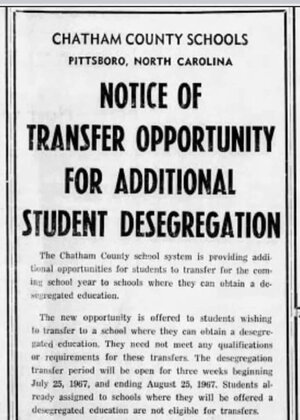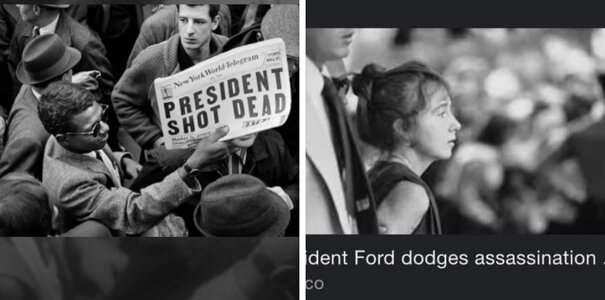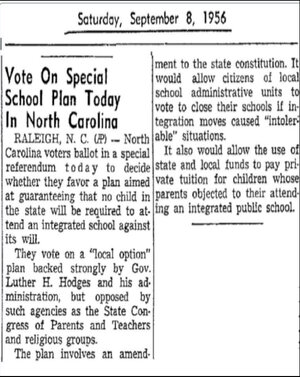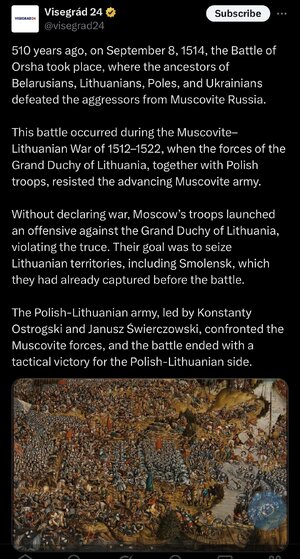From my recollections of those times of desegregation…

The house I grew up in stood on the edge of the woods. The yard was partly framed with a white fence. This was, at least in my mind, the boundary of #Bonlee. I spent a good amount of time “across the border” in those woods as a boy. My buddies and I roamed them like we were pioneers blazing trails. We played a lot of Daniel Boone, Bonanza, and Wagon Train out there. That stand of woods wasn’t really that big but to 10-year-olds distances are deceptive and the world seemed unfathomably big.
‘Arch Hausley Road’ marked the other border of that wild territory for us and frankly we heeded that property marking. Sometime when I was growing up - I can’t say exactly when - the roads in Chatham were named. How that happened I don’t recall but I do remember hearing talk of it in #BonleeHardware and when I was eavesdropping on my parents in the car (Remember: Little ‘pitchers’ have Big Ears). I suspect those namings have their own myriad stories.
Only African American families lived on “Arch Hausley Road.” I don’t know about these days. Arch Hausley himself came into the hardware store from time to time as he needed nails or seeds or the like. Just the same, when I started 1st grade at #BonleeElementary none of the children that lived on that road could go to school there since it was a ‘white’ school. I walked some mornings and almost always back home afterwards and “Arch Hausley Road,” while not a safe walk because country roads don’t have sidewalks, was still less than a mile from Bonlee Elementary. Nevertheless, in 1964 African American kids growing up in Bonlee and all across that part of the county were bussed 6 miles to a ‘colored’ school in Goldston.
So it was that I grew up during desegregation times in #DeepChatham. I remember very well the African American students who joined me at #BonleeElementary in 1967. I’ve heard from a couple of them in the past years and talked with another on the phone pretty regularly. One has gone on to a very effective career in higher education. I am sure all of their experiences were memorable and likely as not, often painful. Gradual integration began in the 3rd grade for me and those kids in Chatham County. During my childhood I was never called upon to show the kind of bravery as were those youngsters ‘switching’ schools.
Every.Single.Day. They have my eternal respect and admiration.
I am well-aware that despite dramatic differences in funding from the state related to the system of segregated schools - African Americans received tax monies in deplorably smaller increments compared to even the also historically under-funded ‘white’ schools. I’m also aware that so-called ‘colored’ schools most often did amazing work in educating children, so dedicated were the teachers, families, and communities. Much has been written about the monumental efforts made in overcoming discrimination in the days before ‘Brown v Board of Education.’ When I teach NC History we study the story of Charlotte’s Second Ward School and that town’s Brooklyn community. You can watch a short documentary here on that topic. It is worth the time:
While the experiences that my school mates and I had were rural in some ways they touched base with those in urban Charlotte - and in other ways they did not. I’ve often reflected that while bussing is so much associated with desegregation in Charlotte and other urban areas, that in the country, at least in some places, the demographics were such that the end of segregation also actually cut back on bussing. The African American students on ‘Arch Hausley Road,’ for example were eventually, after desegregation, going to a school only a mile distant rather than six miles away.
#OTD (September 4) in 1957 Dorothy Counts, 15, enrolled at Charlotte’s all-white Harding High School. She was the 1st African American student to do so. Three years earlier the Brown v Board of Education of Topeka, Kansas decision had come down from the Supreme Court. She was harassed and accosted by a mob then ignored by her teachers. The abuse from the white Charlotteans was more than the teen could endure and after a week she left Harding High and her family moved to Philadelphia. She returned for college at #JohnsonCSmithUniversity and as an adult became a local child care advocate.
Dorothy Counts Enrolls at Charlotte’s Harding High School, 1957




